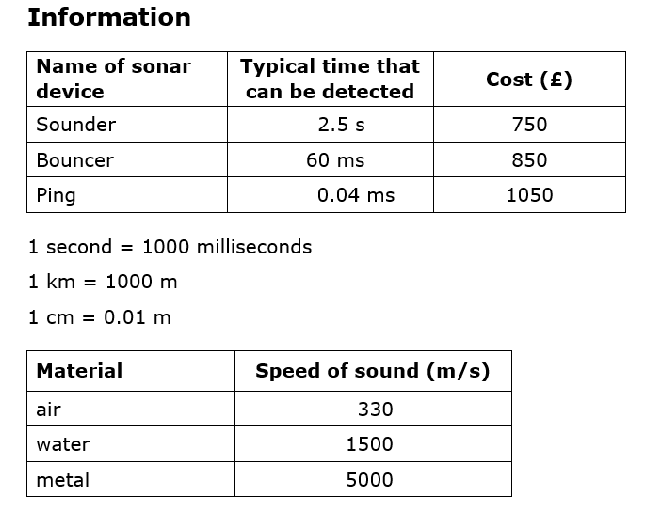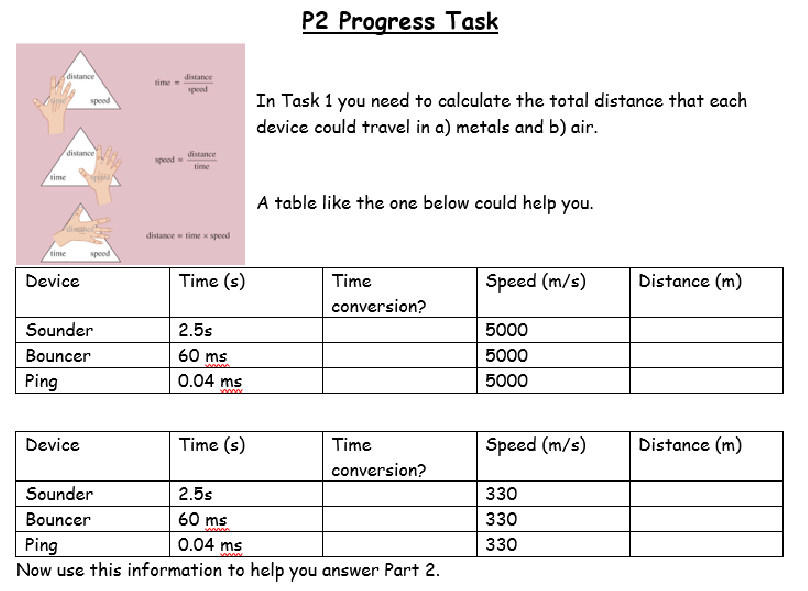






Year 7 Sound Assessment
The task: Selecting sonar devices
You work for a company that makes sonar devices. There are lots of different situations where you can use echoes to work out the distance to an object.
Each sonar device sends out a pulse of ultrasound and detects the time for the echo to be received. It uses the time to work out the distance.
You have received two email messages. You need to use the information and your maths skills to answer it. In your replies you should show that you have done the correct calculations to show which device is most suitable and why the other devices are not.
Remember
Distance (metre, m) = Speed (metres per second, m/s)× Time (seconds, s)
Speed (metres per second, m/s) = Distance (metre, m) / Time (seconds, s)
Time (seconds, s) = Distance (metre, m) / Speed (metres per second, m/s)
Part 1 (Email 1)
Hello,
I need two sonar devices. Please can you tell me which of your devices works best for measuring distances up to 10 cm in metals? Which one is better for measuring distances up to 5 m in air?
Thanks
Mrs Williams



Air

Part 2 (Email 2)
Hi,
I am the owner of several fishing boats. We use sonar to work out where fish are. The maximum depth of the sea where we fish is 2 km. Please could you advise me which device I should buy?
Also, I notice from your website that you give a discount of 15% for orders of 10 items or more. I have 12 boats. Please could you tell me the total cost for 12 suitable devices?
Thanks
Mr B Eye
Remember
15% = 0.15
To work out the % discount of something, find 15% of the original cost and minus it from the original price.
E.g.
15% discount of a product which costs $100
1. 0.15 x 100 = 15
2. 15 -
3. With 15% off the product now costs $75